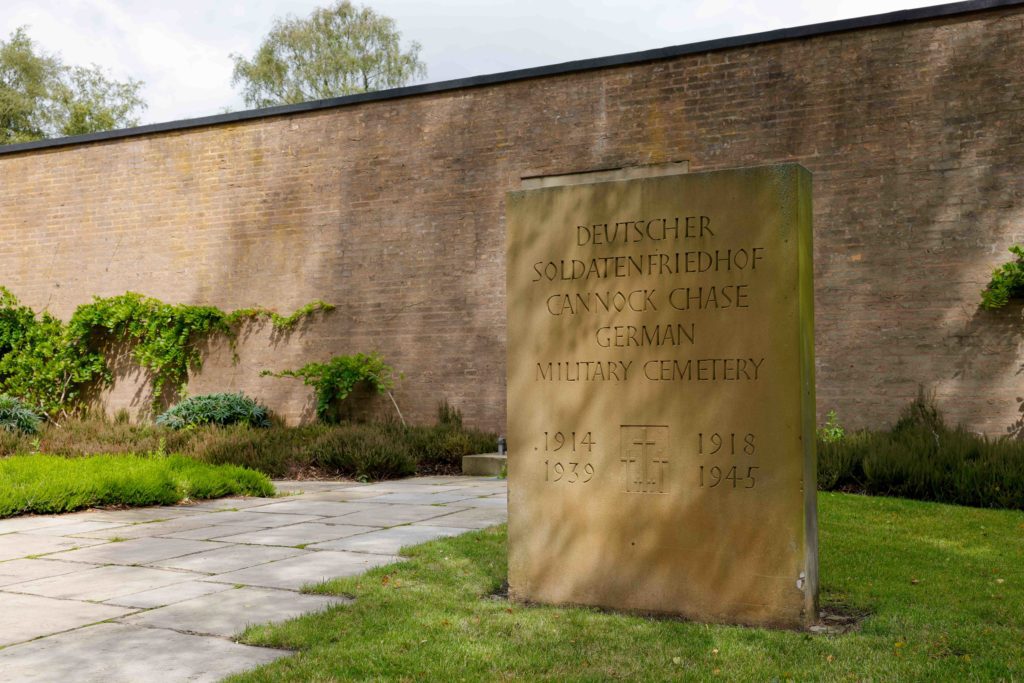Tracing the final resting place for Lydiard Park POWs
Looking at Lydiard Park’s beautiful grounds and playing fields in 2023 it is hard to imagine they were once occupied by a German Military Hospital Camp. Yet a complex of tents, Nissan huts and one or two concrete and brick buildings occupied some eighty acres of the park during World War II and its aftermath. There is virtually no evidence of the camp left on the ground but documentary material brings this memorable part of Lydiard’s history to life. A ‘Special Collection’ of the Lydiard Park Prisoner of War Hospital Camp can be seen on The Lydiard Archives.
First buried at Whitworth Road Cemetery, Swindon
Thanks to the work of Pete and Debra Melsom, The Friends of Lydiard Park recently discovered the names of sixty-six German soldiers, airmen and naval Prisoners of War who died at the military hospital at Lydiard Park. They included patients at the USA 302nd Station Hospital Camp or its successors, the re-designated 4136 USA Hospital Plant, and the 160 Prisoner of War Hospital Camp which was under British military control.
Further research showed the men were recorded in the two Register of Burials in War Graves held at Swindon Cemetery and Crematorium, Kingsdown Road, Swindon. The two registers also contain the burials of British servicemen and Italian Prisoners of War. Having all died between 1944 and 1947, the registers include details of their name (if known), age, rank, service number, date of burial, the name of the officiating minister and burial plot reference. By the time the military camp at Lydiard had become the 160 Prisoner of War Hospital Camp, the period covered by the second register, the ministers who conducted the burials were German.
The sixty-six German Prisoners of War who died at the Hospital Camp in Lydiard Park were buried in Section L of Whitworth Road Cemetery, Swindon, each grave originally marked with a simple wooden cross.
Re-burial at Cannock Chase German Military Cemetery
In 1959 the British Government and the Federal Republic of Germany concluded an agreement on the future maintenance of German war graves which were not looked after by the Commonwealth War Graves Commission. This applied to Whitworth Road Cemetery and many similar sites across the country. The agreement saw the creation of a central memorial at Cannock Chase German Military Cemetery, near Broadhurst Green in Staffordshire, which was officially opened in 1967 following re-interments. The cemetery contains around 5,000 burials from both the First and Second World Wars of both German and Austrian nationals with a very small number of Ukrainians. It is said to have been selected on account of its rolling landscape and pine trees which are reminiscent of parts of Germany.
Sixty-four of the sixty-six men buried at Whitworth Road Cemetery are known to have been re-interred at the Cannock Chase German Military Cemetery. All men are buried in Plot 6. The final resting place of two men (one named and one unknown), although originally recorded as buried at Whitworth Road Cemetery, is not known. Neither is recorded with the Commonwealth War Graves Commission.

Peter Melsom of the Friends of Lydiard Park laying a wreath at Cannock Chase German Military Cemetery.
In August 2023, the Friends of Lydiard Park placed a wreath at the German Military Cemetery at Cannock Chase to remember the sixty-six men who died at Lydiard’s Military Hospital Camp and never returned home. Their gravestones are pictured below. The wreath was made up of red poppies in remembrance of all those who had died serving their country in time of conflict, blue cornflowers – the national flower of Germany, and white foliage to symbolise the peace that followed the end of the conflict.
To see related items and photographs of individual graves compiled by Debra and Pete Melsom visit The Lydiard Archives.





